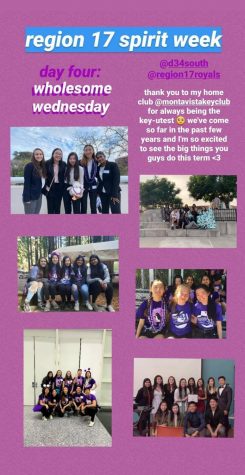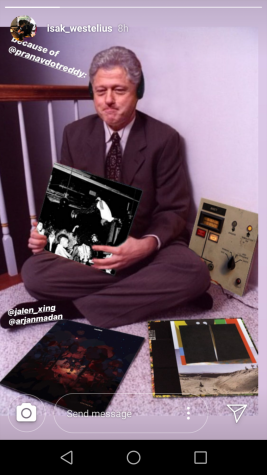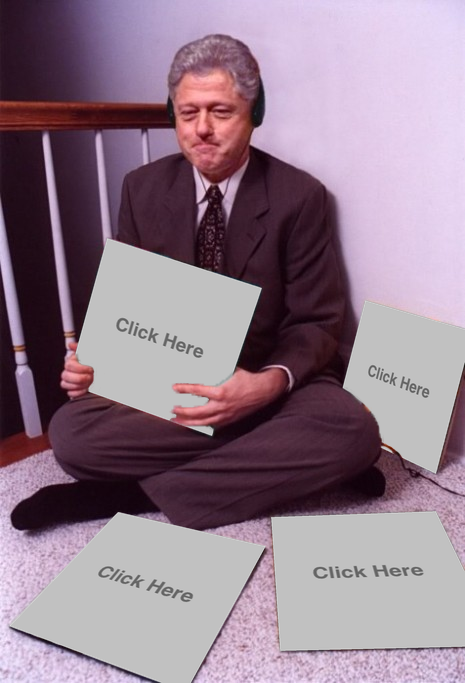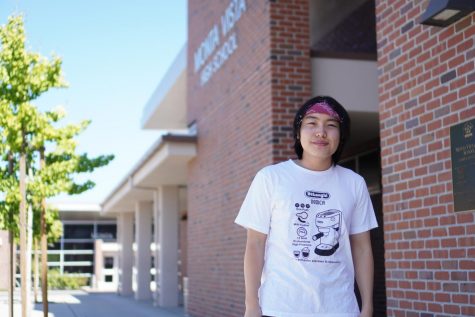Social media trends during shelter-in-place
Exploring the opinions of different MVHS student about social media usage during quarantine
The Bill Clinton album ranking trend sees participants fill out this template of the former president holding up a record sleeve with their favorite albums. Photo Courtesy of billclintonswag.com
June 3, 2020
When the shelter-in-place order came into effect, many students have spent more time on social media platforms such as Instagram and TikTok, participating in various social media trends. These trends span from sharing at-home workout challenges to posting students’ favorite albums on a Bill Clinton-themed Instagram story template.
Junior Cheryl Bai, the Lieutenant Governor for the Division 34 South Key Club, uses social media and participates in trends. Because the school closure and social distancing guidelines make club meetings and activities challenging to organize and host, many clubs have been turning to social media to increase engagement. Bai has taken part in various trends, such as making collages and TikTok videos, which she posts on the club’s Instagram account.
“[The Key Club] [has] a spirit week […] specifically planned because of the shelter-in-place,” Bai said. “We felt like there was nothing else that we could do. Even though we’ve been trying to do things like service and fundraising because we’re a volunteer club, it’s been hard to do those things. So in the meantime, we’re doing a lot of things that are more fun in order to keep [member] engagement.”
Bai attributes the increased use of social media and trends to the amount of free time they now have due to the shelter-in-place mandated school closures. She believes this is beneficial to clubs and club bonding.

“Right now, everybody is just really bored,” Bai said. “People are just willing to do a lot of things [to] pass time that are still fun to them. Even though they are a timekiller, it still brings a sense of unity within the club and helps people connect […] once they see each other’s posts.”
Junior Isak Westelius shares the opinion that many students have been taking to social media to cure boredom during quarantine. Westelius believes a trend can fulfill its purpose of entertainment when it is shocking or outrageous.
“People need some stimulus,” Westelius said. “You know, [we] need to keep [our lives] exciting. A lot of it is just stupid stuff to pass time right now. […] I’ve been on TikTok and there’s some trends out there, like the ‘Ice cube in your cooch’ trend. […] [And] there’s no reason to put an ice cube up your vagina. It’s just like, ’wow, lmao isn’t this crazy. It’s so funny.’ Because there’s no other crazy drama to talk about.”
Junior Siya Shenoi agrees that the recent school closures have led to an increase in social media usage and participation in trends. She adds that participants nominating their friends to partake in the trend also increases the popularity of the trends.
“People nominate other people,” Shenoi said. “That’s part of the reason why the [trends] spread so fast. At least for me, I have felt pressure from some of my friends to participate in these trends. If I choose not to, they’ll start asking, ‘Why don’t you want to do this?’ And if your friend nominates you, you want to do it out of kindness, or you just want to follow the crowd — like a mob mentality.”
Similar to Shenoi, Westelius believes that peer pressure may be part of the reason these trends are popular but adds that quarantine takes social pressures off for students to enjoy activities they would normally be judged by their peers for taking part in.
“I think a lot of people are exploring different communities and activities they otherwise wouldn’t have considered,” Westelius said. “When you’re at school, there’s some societal pressure. To a certain extent you’re reeled in by the group. But when you’re just sitting in your house all day, I think you become more open-minded to some good stuff and some stupid stuff.”
Westelius also highlights the Bill Clinton music trend— where participants fill out a template of the former president holding up a record sleeve with their favorite albums— as one of his favorite trends.
“The Bill Clinton meme, [when] you see somebody [post it on their story] you’re like, ‘They have an interesting taste in music.’,” Westelius said. “You [then] see some album you’ve never heard of before. I looked [up] a couple of albums [I saw on other people’s stories].[…] It gets people on to some interesting music and on some Anthony Fantano ‘Spread the music’ type sh*t.”

Although some students think the shelter-in-place social media trends are widespread and have positive effects, Shenoi finds specific trends to be unnecessary and annoying.
“I would say that [the meaningfulness of the trends] depends on the trend because [for] some of them, you’re just drawing things and I think that’s just a time killer, “ Shenoi said. “But other trends I’ve seen [are more meaningful]. There’s this one trend where you post a picture of yourself, like a baby photo or ugly picture of yourself, and it was supposed to be for people in Italy to laugh at during [their] quarantine. I feel like that trend might have been slightly meaningful, but other trends may not be. And I don’t really think there’s any point […] having your feed spammed with hundreds of pictures of people doing the same thing.”
While Westelius agrees that some trends are more interesting than others, he believes that many of these trends are tied to the participants’ identity, and preserving their status throughout the shelter-in-place.
“I think people want to show engagement to [others], even when you don’t see them face to face,” Westelius said. “It’s like a way to say, ‘I still like my music.’ That’s what the Bill Clinton [trend] is [for]. ‘I still like my club.’ That’s what the bingo sheets are [for].”




























